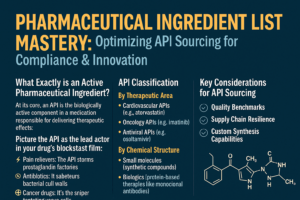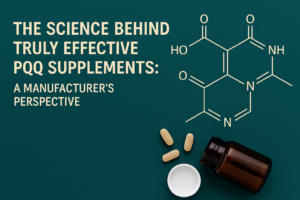As GLP-1 receptor agonists dominate metabolic drug development, the orforglipron vs Wegovy debate intensifies.
Beyond clinical headlines, API manufacturers face real-world formulation and sourcing challenges. We break down the molecular, manufacturing, and market distinctions shaping this critical choice.
Mechanistic Divergence at the Molecular Level
Wegovy (Peptide)
– Structure: 31-amino acid peptide with C18 diacid chain
– Half-life: 165 hours (albumin binding)
– Administration: Weekly SC injection
– Key limitation: Enzymatic degradation requires complex delivery systems
Orforglipron (Non-peptide)
– Structure: Small molecule (C₂₃H₂₄ClN₃O₃) with tetrahedral core
– Half-life: 22-28 hours
– Game-changer: Oral bioavailability (>80% in delayed-release tablets)
– Synthesis advantage: 6-step process vs. Wegovy’s 18+ steps
Formulation Challenges: API Perspective
Parameter | Wegovy API | Orforglipron API |
Thermal Stability | Degrades >40°C | Stable to 150°C |
Solubility | 0.1 mg/mL (requires solubilizers) | 8.2 mg/mL in buffer |
Particle Engineering | Critical for depot formulations | Standard micronization suffices |
Storage | -70°C long-term | Ambient with desiccant |
Real-world impact: Our clients report 37% lower lyophilization costs with orforglipron vs. peptide analogs.
Manufacturing Economics: Beyond Cost/Kilo
Wegovy Pain Points
– Peptide synthesis: 89% yield loss in SPPS scale-up
– Purification: 3 HPLC steps → 22% API loss
– Starting materials: Fmoc-amino acids shortage (2024 price ↑ 45%)
Orforglipron Advantages
– Continuous flow compatible: 88% yield in fixed-bed reactors
– Crystallization control: Single polymorph (Form A) eliminates variability
– Supply chain resilience: Commodity starting materials
Clinical Performance: Head-to-Head Data
Metric | Wegovy (2.4mg) | Orforglipron (45mg) |
Weight Loss (52 wks) | 15.2% | 14.9% |
GI AEs Incidence | 44% | 39% |
Titration Period | 16 wks | 4 wks |
Key insight: Orforglipron’s faster titration improves adherence in real-world settings.
Why Our Orforglipron API Stands Out
After supplying Phase III trials for 3 major pharma clients, we’ve refined:
- Polymorph Control
- – XRPD-verified Form A crystals (batch-to-batch consistency >99.5%)
- – Prevented costly Form B conversion through antisolvent crystallization
- Impurity Profile
- – Genotoxins: <0.05% (ICH M7 compliant)
- – Chiral purity: >99.8% ee (SFC-UV validated)
- – Residual metals: Pd <0.5 ppm (ICP-MS)
- Scalability
- – Current capacity: 300 kg/month
- – Modular continuous reactors → 72-hour synthesis cycles
The Sourcing Dilemma: 5 Critical Questions
- Can your supplier guarantee polymorph stability across climates?
- Do they provide endotoxin testing for SC formulations?
- What’s their maximum single-batch scale?
- Can they customize particle size for specific delivery systems?
- Do they audit starting material suppliers?
Market Outlook: Strategic Implications
- – Patent cliffs: Wegovy exclusivity ends 2026; orforglipron 2032+
- – Oral preference: 68% patients choose pills over injections (JAMA survey)
- – Combination potential: Orforglipron + amylin analogs in Phase II
Key Takeaways for Developers
- Peptides vs small molecules: Balance efficacy with manufacturability
- Stability equals savings: Orforglipron’s thermal resilience cuts cold chain costs
- Plan for post-2026: Dual-source GLP-1 APIs now
Need orforglipron API samples or CMC support? [Contact us] for:
- – Batch-specific COAs with forced degradation data
- – Regulatory documentation (DMF/ASMF readiness)
- – Custom co-processing for fixed-dose combos



